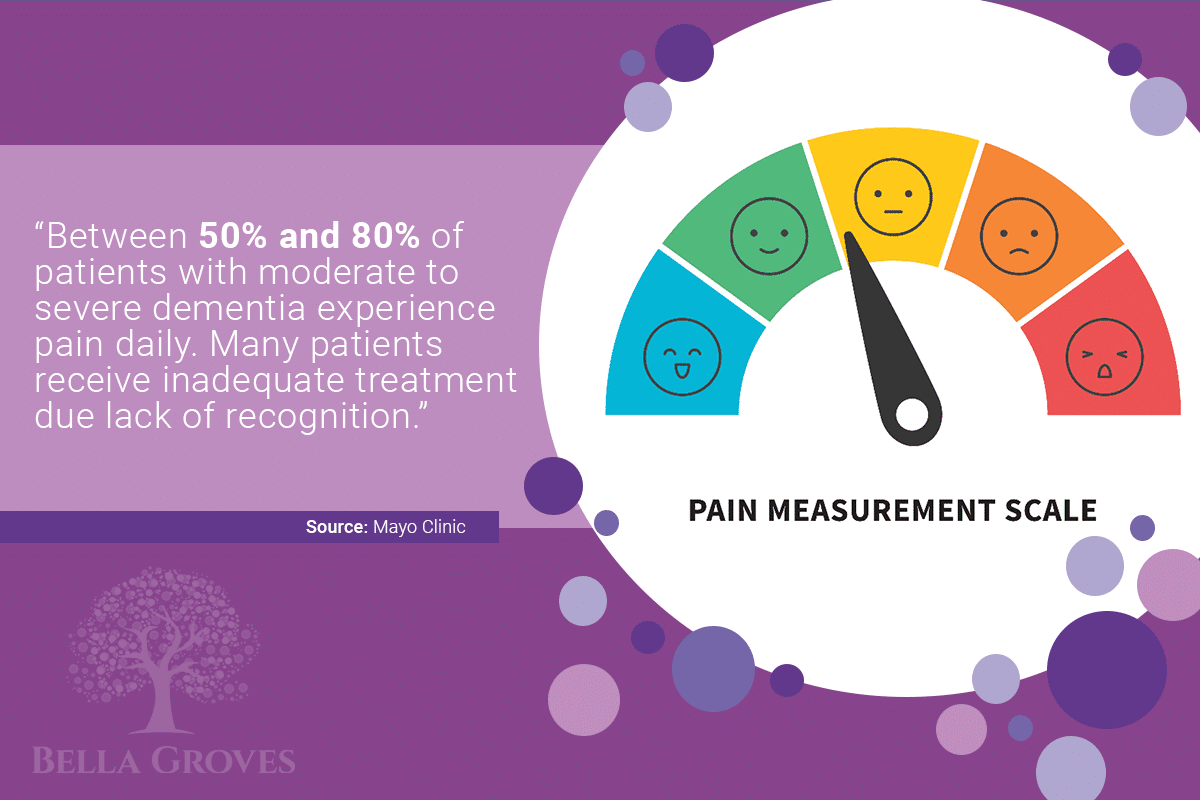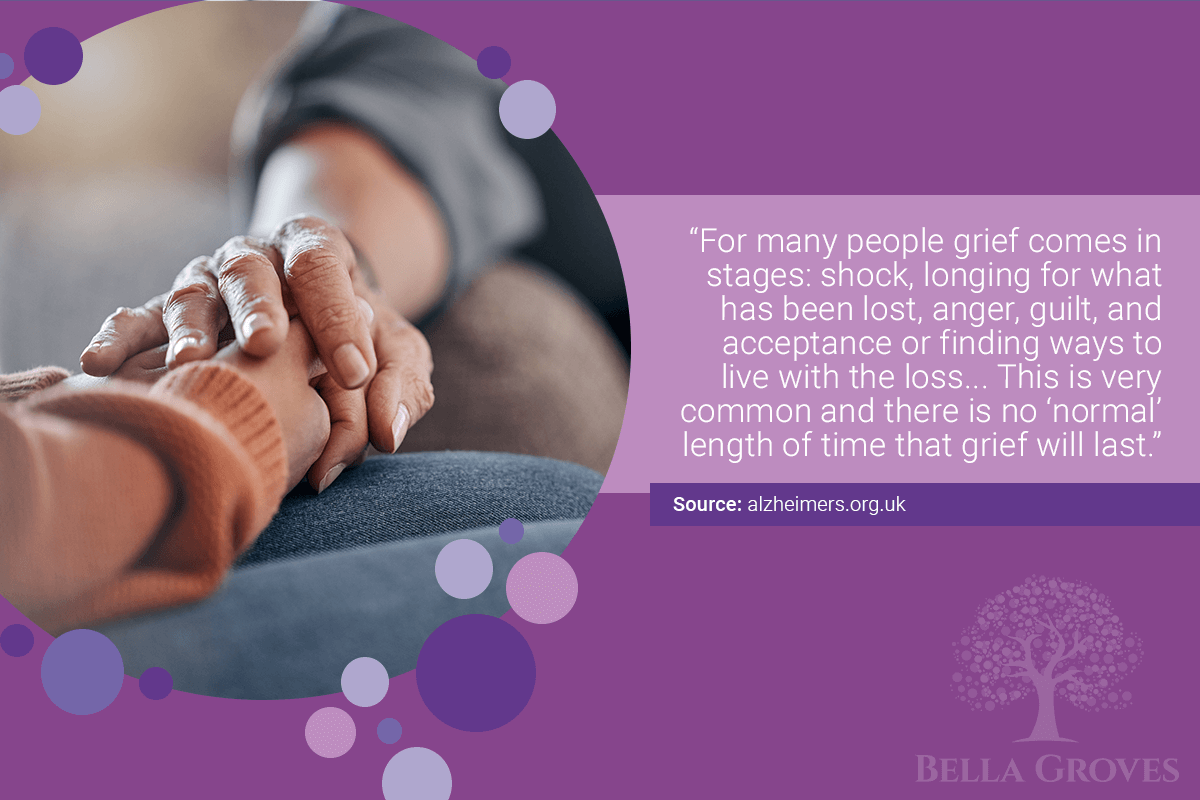
Recognizing Pain in Dementia Patients
Caring for a person living with dementia is a challenging and emotional experience that demands patience, compassion, and keen observation. Among the many hurdles care partners and family members face is recognizing when their loved one is in physical pain. Due to the nature of dementia, individuals may struggle or be unable to communicate their discomfort, leaving their pain unnoticed and untreated.
Bella Groves supports care partners and families as they navigate the complexities of dementia care. Below, our team explores the signs of physical pain in those living with dementia, and shares insights and strategies to ensure their comfort and well-being.
Understanding Dementia and Pain Perception
Dementia progressively impacts memory, thought processes, and the ability to communicate. As this condition deepens its hold on an individual, it begins to alter the way pain is felt and recognized.
Imagine this complexity – the brain, once a reliable processor of pain signals, starts faltering. This shift leaves those with dementia in a perplexing state, struggling to identify and express the pain they may be experiencing.
In dementia’s early stages, individuals might still manage to voice their discomfort. However, as the journey progresses, the ability to communicate undergoes a profound transformation. Words that once came easily may now seem just out of reach, descriptions of pain become muddled, or speech may vanish entirely. This progression creates a significant barrier for care partners striving to understand and soothe the pain their loved ones are enduring.
Signs of Physical Pain in Those with Dementia
Observable Behaviors
Recognizing physical pain in people living with dementia requires careful observation of their behavior. Changes in body language, facial expressions, and movements can provide clues. Look for signs such as grimacing, wincing, or clenching fists. Restlessness, agitation, or an unwillingness to move may also indicate serious pain or discomfort.
Behavioral Changes
Behavioral changes, though subtle, are important clues that someone might be in pain. If you notice someone becoming more irritable, aggressive, or pulling away from social activities, it could mean they’re dealing with some physical discomfort. Keep an eye on any shifts from their normal behavior or daily habits – these changes could be warning signs.
Verbal Cues and Sounds
Even if verbal communication is impaired, a person living with dementia might still use certain sounds or words to express pain. Listen for groans, moans, or cries, and take note of any repetitive phrases or words that seem out of context. These verbal cues can be essential in identifying discomfort.
Effective Communication Strategies
When verbal communication is challenging, non-verbal techniques can bridge the gap. Maintain eye contact, use gentle touch, and observe their reactions to different stimuli. Simple gestures like nodding, smiling, or frowning can convey understanding and empathy.
Using Visual Aids and Simplified Language
Visual aids, such as pictures or pain scales, can help individuals indicate where they feel pain and its severity. Simplify your language to make it easier for them to comprehend. Use short sentences, speak slowly, and repeat questions if necessary.
Patience and Active Listening
Patience is crucial when communicating with a person living with dementia. Allow them time to process information and respond. Active listening involves paying full attention, validating their feelings, and avoiding interruptions. This approach fosters trust and encourages them to share their experiences.
Importance of Pain Management
Effective pain management significantly enhances the quality of life for those living with dementia. By alleviating discomfort, your loved one can engage more fully in daily activities, maintain social connections, and experience a greater sense of well-being.
Unmanaged pain can lead to expressions, such as aggression, agitation, and sleep disturbances. Addressing pain promptly can mitigate these issues and create a more peaceful and harmonious environment.
Pain management should be part of a holistic approach to dementia care. Consider incorporating complementary therapies, such as massage, music, and aromatherapy, to provide additional comfort and relaxation. A well-rounded care plan promotes overall health and happiness.
We’re Here to Support You
Recognizing pain in dementia patients is a vital aspect of caregiving. By understanding the challenges posed by dementia, observing behavioral cues, and employing effective communication strategies, care partners can significantly improve their loved ones’ quality of life. Remember, you are not alone in this journey.
If you need further assistance or personalized advice, don’t hesitate to reach out to Bella Groves. Our team is dedicated to helping individuals and families navigate the complexities of dementia care with compassion and expertise.

